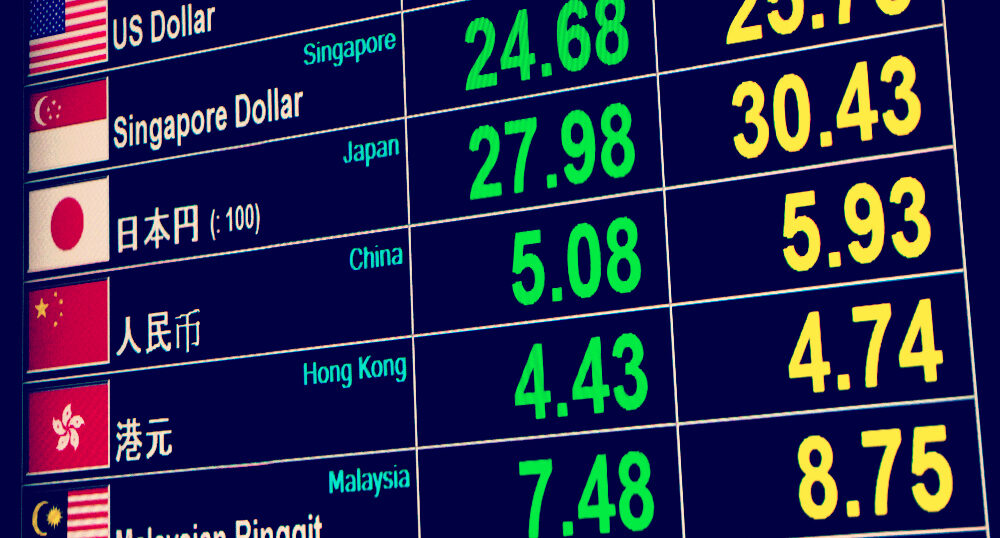Foreign exchange risk cannot be avoided in any way when expanding overseas. Companies that plan to expand overseas or have already started doing so must take thorough measures and manage exchange rate risk to stabilize their overseas business. Let’s take a look at what’s important for maximum control of exchange rate risk.
目次
Foreign exchange risk is likely to increase as Japanese companies expand overseas
Japanese companies are expanding overseas in response to the shrinking domestic demand caused by the declining birthrate, aging population and sluggish GDP. From large enterprises to small and medium enterprises, overseas expansion has started in various forms. An increasing number of companies are using low-cost, low-risk methods, such as direct investment, which is the most costly and risky method, establishing overseas bases, exporting, and entering overseas markets using EC sites.
This increase in overseas expansion has a variety of implications, including the aim of becoming a major blue ocean in the world market, and the acquisition of markets by capitalizing on the popularity of high-quality Japanese products made in Japan. However, Japanese companies cannot challenge the world without risk.
A variety of risks can be avoided to some extent through close information gathering at the planning stage, marketing strategies, and communication with the local community. However, exchange rate risk cannot be completely avoided, and it will become a persistent problem if we expand overseas. Of course, the higher the percentage of foreign currency assets held, the greater the foreign currency exposure. The more foreign currency transactions, the higher the exchange risk.
Therefore, as the number of local employees increases and the ratio of overseas production increases, foreign currency-denominated assets and transactions increase and they become more susceptible to unexpected exchange rate fluctuations.
Countermeasures against foreign exchange risks of companies operating overseas
When expanding overseas, companies must always manage exchange rate risk and consider minimizing the impact of exchange rates. The concept of exchange rate risk management includes the management of exchange rates and settlement rates to be recorded, but another important purpose is to avoid fluctuations in assumed rates. The Company also assesses assets and liabilities denominated in foreign currencies at fair value and manages dividends denominated in foreign currencies. It is also important to identify the targets for foreign exchange risk management.
As for foreign exchange risk, Japanese companies have accumulated the know-how they have gained through overseas expansion, and are now choosing and implementing ways to avoid this risk. Futures and currency options are major ways to avoid foreign exchange risk.
For futures transactions, you can firm the transaction using the current rates at the time of the transaction. While this may result in a loss of exchange rate benefits, it is a method that enables quick determination of profits and eliminates instability due to exchange rate fluctuations. Currency options also allow you to avoid trading at a disadvantage by buying and selling rights only.
Measures against foreign exchange risk in exports

The choice of invoice currency is also important for exporting companies. Mainly in Japan, exports to Asia and developed countries are flourishing, but the choice of invoice currency by destination has a significant impact on exchange rate risk. It is related to the weight of exchange risk between exporting companies and their own companies, but it also affects pricing.
Products with the world’s top share are often exported in yen to avoid foreign exchange risks. On the whole, however, the ratio of yen-denominated transactions has been declining, and the number of transactions denominated in dollars and the choice of the currency of the export destination has increased. In particular, in the case of exports to developed countries, there are many transactions denominated in the destination currency. The lower the hedge cost, the stronger this tendency. There seem to be a lot of transactions in the currency of the exporting destination among intra-company trade.
Also, due to strict capital controls, exports to Asia are often denominated in dollars. However, exports to countries such as Singapore, Hong Kong, and South Korea, where restrictions are liberalized, are sometimes denominated in the currency of the destination.
A common currency for the export and import of headquarters and overseas bases is also an effective way to mitigate exchange risk. Both imports and exports are denominated in the same currency, a means of offsetting exchange rate risk. The same is true for offsetting foreign currency claims against liabilities. When selling products overseas, it is also useful to take measures such as procuring raw materials and parts locally from manufacturing. This approach is used by exporters as the primary means of eliminating currency exposure and reducing currency risk.
Summary
The exchange rate risk involved in overseas expansion is an inescapable problem. Therefore, it is important to always address the issue of how to manage exchange rate risk. Make appropriate choices according to the country or region of export, relationship with business partners, and business development. It is also important to be globally competitive in order to make choices that reduce the burden of exchange rate risk.



